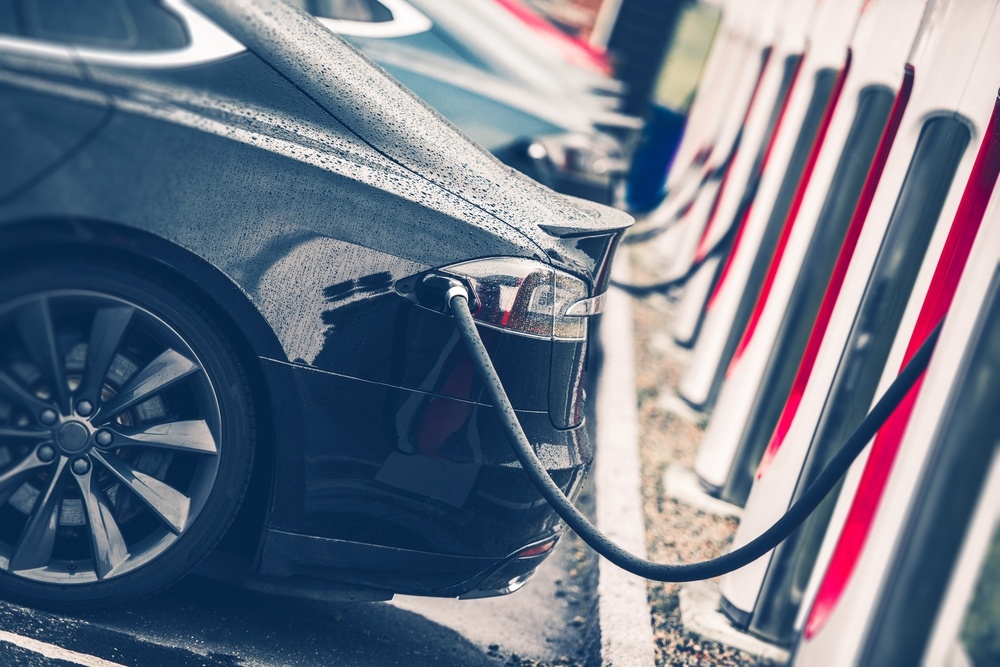Key Takeaways
- Former Tesla executive Jon McNeill thinks the U.S. EV market can grow on its own.
- Europe kept strong EV sales even after cutting incentives.
- Tesla faces more competition, but buyers now have more choices.
- Market forces and diverse models can sustain EV market growth.
Former Tesla executive Jon McNeill believes the U.S. EV market can stand on its own. He points to Europe, where sales stayed strong after subsidy cuts. As the federal tax credit nears its 2025 end, this idea gains traction. More brands now compete in the EV market, and prices are dropping. Consequently, buyers have more affordable choices. McNeill says this shift proves a healthy EV market does not need subsidies forever.
Why the EV market in Europe Thrived
In Europe, carmakers faced a different path. Governments cut EV incentives to trim budgets. However, buyers kept buying electric cars at solid rates. First, manufacturers introduced more affordable models. Second, they improved charging networks across cities and highways. Third, they cut production costs and passed savings to buyers. As a result, electric vehicles moved deeper into mainstream. These moves show demand can stay high without endless subsidies.
What It Means for the U.S. EV Market
The U.S. EV market can learn from Europe’s playbook. More brands, from legacy automakers to startups, now offer electric cars. Buyers no longer rely on one or two options. In addition, production has ramped up domestically, lowering costs. Charging networks have also expanded in many states. Jon McNeill believes these shifts will keep sales rising. He argues that competition will push prices down. Therefore, even without tax credits, electric cars can remain appealing.
Challenges for the EV market in America
Despite positive signs, the EV market still faces hurdles. First, charging infrastructure remains uneven in rural areas. Many buyers worry about finding fast chargers on long trips. Second, sticker prices can still be high for some models. Without incentives, upfront costs may deter budget shoppers. Third, battery supply chains need more expansion. Manufacturers must secure raw materials for rising demand. Finally, public awareness of new EV options must grow. Automakers and dealers need to educate buyers on benefits and savings.
Future Outlook for the EV market
Looking ahead, several trends could boost the EV market. More midrange and budget electric models are on the way. As production scales up, prices should fall further. In addition, innovative battery tech promises longer range and faster charging. Governments may still offer localized incentives, such as rebates or reduced tolls. Meanwhile, competition will spur more features and better designs. Consequently, electric cars could match or beat gas models on cost. McNeill’s view suggests that market forces will drive growth, even without federal credits.
Electric Vehicles Beyond Subsidies
Electric vehicles once relied heavily on incentives to jumpstart sales. Now, the industry has matured. Consumers value lower running costs and quiet driving. Moreover, many buyers embrace cleaner transport for environmental reasons. Fleet operators and ride-hailing services also favor EVs to cut fuel bills. Insurance companies offer lower rates on electric models, too. All these factors create a self-reinforcing cycle. As more people choose electric vehicles, manufacturers push for further improvements and scale.
The Role of Competition in Driving Prices Down
Competition remains a key driver in the EV market’s future. Established automakers like Ford, GM, and Volkswagen now offer a range of electric cars. Newer brands such as Rivian and Lucid add fresh ideas. Moreover, some tech giants plan to enter the fray. This diversity forces each maker to improve value propositions. Lower prices, better warranties, and unique features become standard. Consequently, buyers gain more power and choice. These dynamics can sustain growth, even when subsidies fade away.
Consumer Confidence and Education
Building consumer confidence is vital for the EV market’s success. Clear information about total ownership costs can ease concerns. Many buyers misjudge charging times or range limits. Therefore, automakers and dealers must offer hands-on experiences. For example, test-drive events and detailed cost breakdowns can help. Public charging maps and mobile apps also guide new EV owners. As knowledge spreads, range anxiety will decline. In turn, more drivers will feel ready to switch to electric vehicles.
Policy Moves Beyond Tax Credits
Although the federal EV tax credit may expire, policy support can take new forms. State and local governments might offer road-use fee exemptions or parking perks. Utilities could provide time-of-use rates to encourage off-peak charging. Cities may adopt low-emission zones to favor electric cars. Private businesses, like malls and workplaces, could install more chargers. These steps can ease the transition without direct cash rebates. Thus, the ecosystem around electric vehicles remains strong and growing.
A Path Toward Sustainable Growth
In the long run, sustainable EV market growth will rely on balanced strategies. Manufacturers must keep innovating on battery tech and production methods. Governments at all levels need to support charging infrastructure and fair regulations. Consumers will benefit from clear, honest information on costs and performance. Lastly, competition will remain the ultimate engine driving prices lower and variety higher. With these elements in place, the EV market can thrive on its own.
Frequently Asked Questions
How did Europe maintain EV sales after cutting incentives?
Europe improved charging networks, lowered production costs, and introduced budget models. These moves kept demand high even without heavy subsidies.
Will America face the same success in the EV market?
The U.S. has growing car choices, better charging, and stronger production. If these trends continue, the EV market can mirror Europe’s success.
What challenges could slow the EV market growth?
Uneven charging coverage, high upfront prices, and raw material supply limits can hinder expansion. Education and infrastructure upgrades will help overcome them.
Could new policies replace the federal EV tax credit?
Yes. Local rebates, parking perks, utility rates, and low-emission zones can support EV adoption without direct federal credits.

